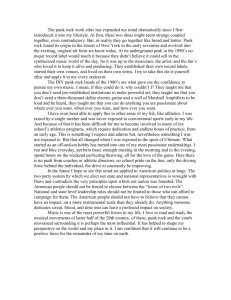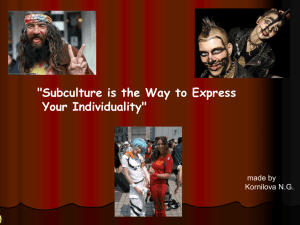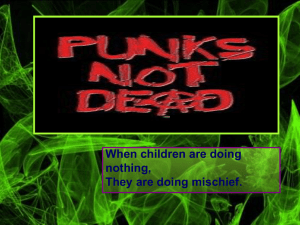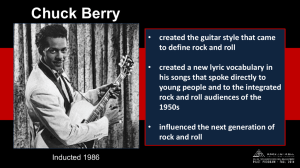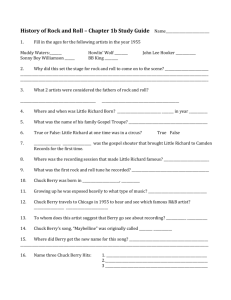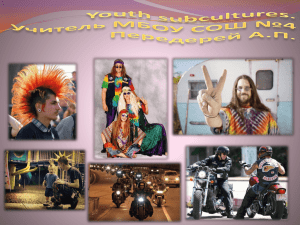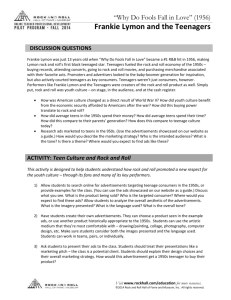American History through Pop Culture
advertisement
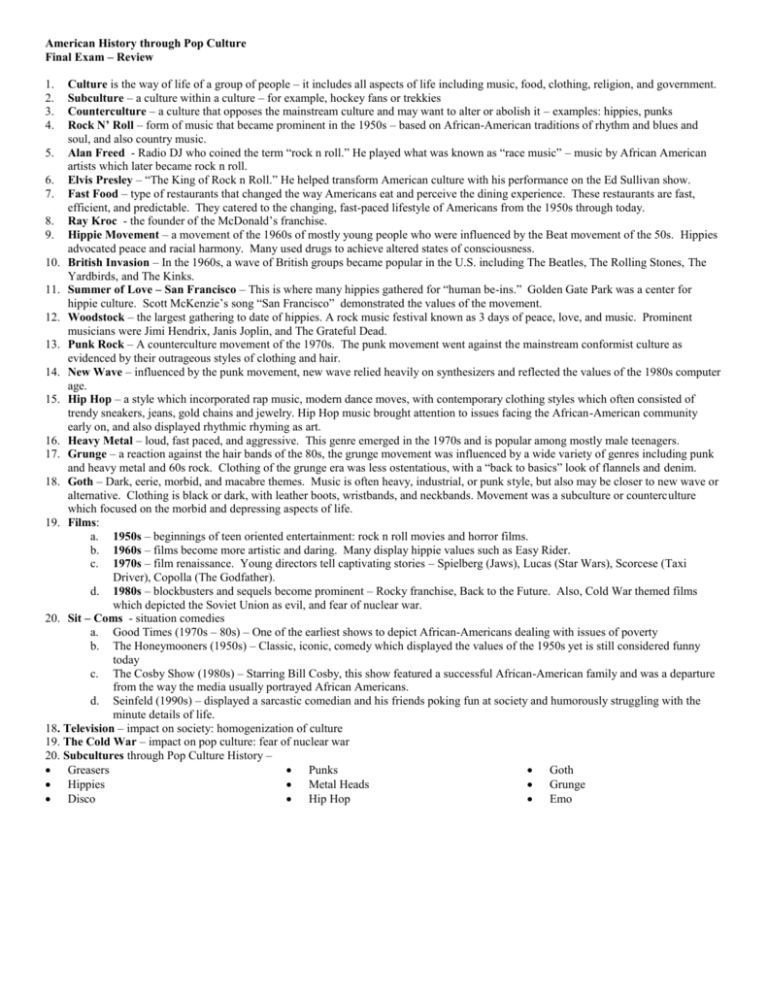
American History through Pop Culture Final Exam – Review Culture is the way of life of a group of people – it includes all aspects of life including music, food, clothing, religion, and government. Subculture – a culture within a culture – for example, hockey fans or trekkies Counterculture – a culture that opposes the mainstream culture and may want to alter or abolish it – examples: hippies, punks Rock N’ Roll – form of music that became prominent in the 1950s – based on African-American traditions of rhythm and blues and soul, and also country music. 5. Alan Freed - Radio DJ who coined the term “rock n roll.” He played what was known as “race music” – music by African American artists which later became rock n roll. 6. Elvis Presley – “The King of Rock n Roll.” He helped transform American culture with his performance on the Ed Sullivan show. 7. Fast Food – type of restaurants that changed the way Americans eat and perceive the dining experience. These restaurants are fast, efficient, and predictable. They catered to the changing, fast-paced lifestyle of Americans from the 1950s through today. 8. Ray Kroc - the founder of the McDonald’s franchise. 9. Hippie Movement – a movement of the 1960s of mostly young people who were influenced by the Beat movement of the 50s. Hippies advocated peace and racial harmony. Many used drugs to achieve altered states of consciousness. 10. British Invasion – In the 1960s, a wave of British groups became popular in the U.S. including The Beatles, The Rolling Stones, The Yardbirds, and The Kinks. 11. Summer of Love – San Francisco – This is where many hippies gathered for “human be-ins.” Golden Gate Park was a center for hippie culture. Scott McKenzie’s song “San Francisco” demonstrated the values of the movement. 12. Woodstock – the largest gathering to date of hippies. A rock music festival known as 3 days of peace, love, and music. Prominent musicians were Jimi Hendrix, Janis Joplin, and The Grateful Dead. 13. Punk Rock – A counterculture movement of the 1970s. The punk movement went against the mainstream conformist culture as evidenced by their outrageous styles of clothing and hair. 14. New Wave – influenced by the punk movement, new wave relied heavily on synthesizers and reflected the values of the 1980s computer age. 15. Hip Hop – a style which incorporated rap music, modern dance moves, with contemporary clothing styles which often consisted of trendy sneakers, jeans, gold chains and jewelry. Hip Hop music brought attention to issues facing the African-American community early on, and also displayed rhythmic rhyming as art. 16. Heavy Metal – loud, fast paced, and aggressive. This genre emerged in the 1970s and is popular among mostly male teenagers. 17. Grunge – a reaction against the hair bands of the 80s, the grunge movement was influenced by a wide variety of genres including punk and heavy metal and 60s rock. Clothing of the grunge era was less ostentatious, with a “back to basics” look of flannels and denim. 18. Goth – Dark, eerie, morbid, and macabre themes. Music is often heavy, industrial, or punk style, but also may be closer to new wave or alternative. Clothing is black or dark, with leather boots, wristbands, and neckbands. Movement was a subculture or counterculture which focused on the morbid and depressing aspects of life. 19. Films: a. 1950s – beginnings of teen oriented entertainment: rock n roll movies and horror films. b. 1960s – films become more artistic and daring. Many display hippie values such as Easy Rider. c. 1970s – film renaissance. Young directors tell captivating stories – Spielberg (Jaws), Lucas (Star Wars), Scorcese (Taxi Driver), Copolla (The Godfather). d. 1980s – blockbusters and sequels become prominent – Rocky franchise, Back to the Future. Also, Cold War themed films which depicted the Soviet Union as evil, and fear of nuclear war. 20. Sit – Coms - situation comedies a. Good Times (1970s – 80s) – One of the earliest shows to depict African-Americans dealing with issues of poverty b. The Honeymooners (1950s) – Classic, iconic, comedy which displayed the values of the 1950s yet is still considered funny today c. The Cosby Show (1980s) – Starring Bill Cosby, this show featured a successful African-American family and was a departure from the way the media usually portrayed African Americans. d. Seinfeld (1990s) – displayed a sarcastic comedian and his friends poking fun at society and humorously struggling with the minute details of life. 18. Television – impact on society: homogenization of culture 19. The Cold War – impact on pop culture: fear of nuclear war 20. Subcultures through Pop Culture History – Greasers Punks Goth Hippies Metal Heads Grunge Disco Hip Hop Emo 1. 2. 3. 4.
